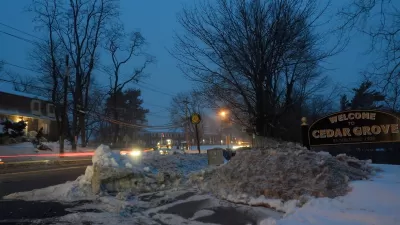The legacy of Los Angeles murals has all but left the city, buried under sign ordinances, billboard policy and tagging. Tanner Blackman in the Dept. of City Planning Code Studies Section is working to free up the knot of regulation.
Ed Fuentes writes the first in a series of blogs examining how Los Angeles changed from a "Camelot for large-scale outdoor art" to a tangle of sign regulations and anti-graffiti policy.
Fuentes explains what happened:
"At first, painted murals flourished, and often funded on private property throughout the city. In the Department of Cultural Affairs database alone, it is cited that 400 City-sponsored murals were produced between 1971 and 1999.
Many of you know the story from here. Companies, seeking to put up billboards and supergraphics, challenged city's mural exemptions by claiming First Amendment protection, and in the Los Angeles, murals became prohibited."
Back in February of this year, the city took on the task of reviewing current policy to try to restore the ability for muralists to do their work. Fuentes talks with Tanner Blackman, the planner tasked with the job.
Thanks to Ed Fuentes
FULL STORY: Before Paint Comes Paperwork: Murals As Seen By Code Breakers

Alabama: Trump Terminates Settlements for Black Communities Harmed By Raw Sewage
Trump deemed the landmark civil rights agreement “illegal DEI and environmental justice policy.”

Study: Maui’s Plan to Convert Vacation Rentals to Long-Term Housing Could Cause Nearly $1 Billion Economic Loss
The plan would reduce visitor accommodation by 25% resulting in 1,900 jobs lost.

Why Should We Subsidize Public Transportation?
Many public transit agencies face financial stress due to rising costs, declining fare revenue, and declining subsidies. Transit advocates must provide a strong business case for increasing public transit funding.

Paris Bike Boom Leads to Steep Drop in Air Pollution
The French city’s air quality has improved dramatically in the past 20 years, coinciding with a growth in cycling.

Why Housing Costs More to Build in California Than in Texas
Hard costs like labor and materials combined with ‘soft’ costs such as permitting make building in the San Francisco Bay Area almost three times as costly as in Texas cities.

San Diego County Sees a Rise in Urban Coyotes
San Diego County experiences a rise in urban coyotes, as sightings become prevalent throughout its urban neighbourhoods and surrounding areas.
Urban Design for Planners 1: Software Tools
This six-course series explores essential urban design concepts using open source software and equips planners with the tools they need to participate fully in the urban design process.
Planning for Universal Design
Learn the tools for implementing Universal Design in planning regulations.
Smith Gee Studio
Alamo Area Metropolitan Planning Organization
City of Santa Clarita
Institute for Housing and Urban Development Studies (IHS)
City of Grandview
Harvard GSD Executive Education
Toledo-Lucas County Plan Commissions
Salt Lake City
NYU Wagner Graduate School of Public Service




























